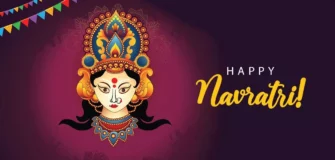IIM Ahmedabad Raises CAT Cutoff For 2026-28 Admissions
Share

One of India’s top business schools, the Indian Institute of Management Ahmedabad (IIMA), has drastically raised the bar for enrollment to its flagship Post Graduate Programme (PGP) for the academic batch 2026-28. The move, which includes a big increase in the minimum Common Admission Test (CAT) percentile requirements, is expected to make the competition for candidates seeking a desirable spot at the institute even harder.
In accordance with the new standards, applicants in the General and Economically Weaker Section (EWS) categories must now achieve a minimum overall percentile of 95 in CAT 2025, along with at least 85 percentile in each of the three sections: Verbal Ability and Reading Comprehension (VARC), Data Interpretation and Logical Reasoning (DILR), and Quantitative Ability (QA). The previous eligibility criteria of 80 overall percentile and 70 in each sectional paper represent a significant shift. IIMA’s objective to reduce the number of applicants and guarantee that only the best students advance through the selection process is reflected in the sharp rise in both general and sectional criteria.
The new admission criteria, which were made public in advance of the CAT 2025, which is scheduled for November 30 of this year, specify category-specific cut-offs that are still far higher than in past years. The minimum requirement for candidates from the Non-Creamy Layer Other Backward Classes (NC-OBC) is a 90 overall percentile with at least 80 in each section. Candidates with disabilities (PwD) who apply under this category will have a somewhat lower benchmark of 80 overall and 70 in sectional scores. Candidates from Scheduled Castes (SC) must achieve at least 85 percentile overall and 75 percentile in each subject, while PwD candidates in this category are eligible with 75 percentile overall and 65 percentile in each section. The minimum bar for Scheduled Tribe (ST) candidates is 75 percentile overall and 65 percentile in each section, while the requirements for PwD-ST candidates are the least stringent, at 65 percentile overall and 55 percentile in each section. Transgender applicants who apply under the General category will now be evaluated according to the NC-OBC cut-off criteria, which is a significant change.
Despite the fact that CAT scores are still the main criterion used to narrow down the candidate pool, the admissions procedure at IIMA is far more complicated than just taking the test. Those who meet these cutoffs will be invited to the following rounds, which consist of the Analytical Writing Test (AWT) and the Personal Interview (PI). In the end selection matrix, the weight of the two following phases is 65% combined. The PI, which has a weightage of 50%, is the most important element of this, while the AWT only makes up 10%. The Application Rating (AR), which assesses academic performance and profile-based credentials, makes up the remaining 15% of the composite score, while the CAT score alone accounts for 25%.
This multi-stage evaluation is meant to give a complete picture of the applicant, making sure that the last group is not just academically outstanding but also exhibits analytical, communicative, and interpersonal talents necessary for the program’s demands. In order to improve the caliber of its incoming class, IIMA seeks to raise the bar for admission and place more emphasis on post-test assessment.
The computer-based CAT 2025 test will be administered in about 170 Indian cities as the entry point to all of the IIMs and several other prestigious business colleges. The registration procedure is now in progress and will be available until September 13, 2025. The test, which applicants will sit on November 30, will assess both their eligibility and their likelihood of moving forward in the admissions process.
The change in criteria is intended to improve the caliber of candidates who are chosen for interviews, according to Professor Karthik Sriram, Chairperson of Admissions for PGP and PGP-FABM at IIMA, who explained the reasoning behind the modifications. The institute wants to raise the criteria for admission in order to draw candidates who have outstanding aptitude in CAT as well as diverse backgrounds and academic credentials.
The choice to increase the cut-offs coincides with an increase in competition for admission to India’s top management schools. Over two lakh applicants take the CAT exam each year, but very few of them receive calls from the best IIMs, and even fewer make it onto the last merit lists. To remain in the running under the revised qualifying criteria, candidates—particularly those in the General and EWS categories—will have to excel in all three areas of the exam.
The new standards point to a more difficult path for students seeking admission to IIMA’s premier programs, such as the PGP and the PGP-Food and Agribusiness Management (FABM). The institute’s emphasis on both sectional and overall performance highlights its preference for candidates who are well-rounded rather than excelling in a single subject. The action is also anticipated to promote rigorous preparation among candidates, driving them to strive for greater degrees of consistency and quality.
The announcement of harsher standards has already caused ripples in the aspirant community as the CAT exam is only a few months away. Some see it as an additional obstacle in an already very competitive admissions process, while others see it as a manifestation of IIMA’s ongoing efforts to maintain its position as a top institution in the world. The shift, however, represents a shift in IIMA’s admissions policy, one that places a high value on high percentile scores, thorough evaluation, and comprehensive assessment.
In anticipation of the registration deadline for CAT 2025, candidates throughout the nation are anticipated to increase their preparation, bearing in mind that only those who satisfy the higher cut-offs will have a chance to compete for the few slots at IIMA. The high bar represents both a barrier and an incentive for many, reflecting the high expectations of an organization that is still establishing standards in management education.












